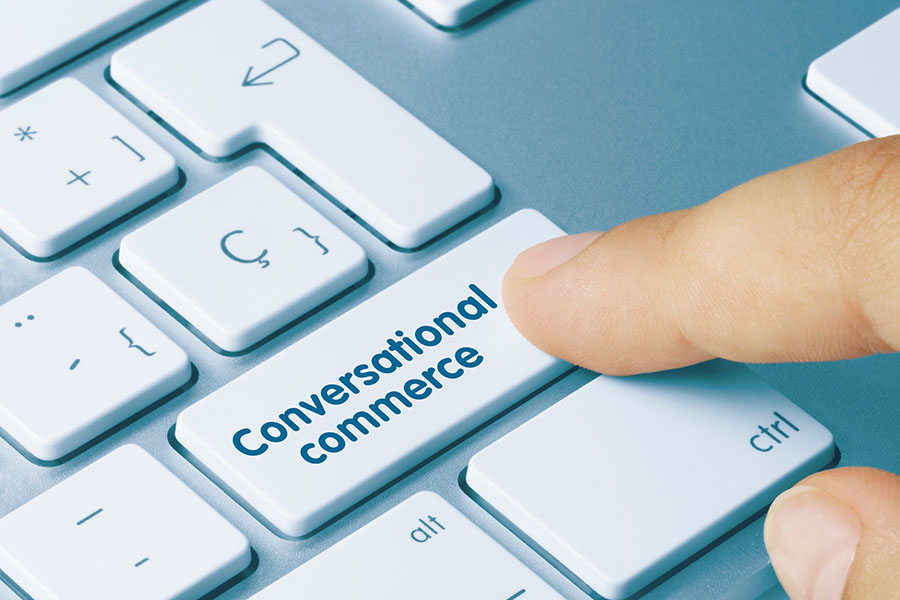
Selling online includes deciding what products to sell, a channel to sell products, and a process for storing goods and shipping orders. This guide explains how to sell online step by step and provides you with ways to promote and improve your chosen sales channel efficiently.
Key Takeaways:
- Choose a product that solves a problem, fills a need, or improves an existing product.
- You can sell through an ecommerce website, online and community marketplaces, social media, and wholesale marketplaces.
- We recommend diversifying your sales channels to increase profits but have your own online store.
Step 1: Conduct Market Research
Selling online begins with selecting your target audience and choosing a niche, so you can hone in on which products you would like to sell.
- Begin with selecting an overall business concept. Identify markets that have potential growth opportunities and avoid oversaturated markets. You can use tools such as Google Trends or Google Keyword Planner to find out about trending markets and products.
- Niche down.Choosing a niche will also give you a specific direction and make it easier to develop a strong brand. For example, a dog enthusiast might want to open an online store with dog products. However, a better business concept is to fill a market void or need, such as organic dog food specifically for pit bulls.
Pop Your Pup is a niche ecommerce brand that creates custom products with customers’ pet photos.
Step 2: Decide What to Sell Online
Before you even begin thinking about where to sell online, you need to decide what to sell first. This is the most crucial step, as it impacts every business decision you will make after.
Generally, you can sell your products (make them yourself) or services, someone else’s products or services, and in-demand or innovative products. Regardless of industry, there are two types of products you can sell—commoditized products and niche products.
- Commoditized products are essential and/or popular (in-demand) goods or services (physical or digital). Think of it as items everybody needs—clothes, grocery items, toys, and more.
- Niche products are goods or services that serve a specific set of customers and belong to specific product categories. They are often made in small batches or on demand. Handmade or one-of-a-kind beaded jewelry, custom shirts, and personalized leather wallets are perfect examples of niche products.
It can be difficult to think of product ideas in a saturated market. Fortunately, there are ways to help you dig in and find the best product to sell for your online business.
- Find a problem that needs to be solved. This doesn’t have to be a complicated process—just think about what solutions would make your own life easier, happier, or more satisfying. Additionally, there can also be opportunities to improve existing product features, a new or emerging market, and an innovative way of product positioning. There are business opportunities everywhere.
- Sell products you are passionate about. Having an emotional investment in a product you sell will help you stand out among the competition because you can better deliver its value to the market by having a brand story.
- Look at products with branding potential. Branding statistics show that you only have seven seconds to make a (good) first impression. Consumers want more branded content, too. So look for products you can craft a good branding story around, and narrow options down to those that resonate with the brand you have in mind.
- Keep an eye out for emerging trends. Staying updated on trending products can be beneficial so you can sell in-demand products to capitalize on profit before they hit peak popularity.
- Serve niche segments. Again, niching down often spells success for your ecommerce business. Niche audiences are highly engaged and high-converting because you are giving them what they are looking for and want.
If you want more product ideas, click through our articles below:
Once you have decided what product to sell, the next step is sourcing your products. It will take some time to find the right suppliers and ensure you are satisfied with the final results. Plan to spend several months and a couple of thousand dollars requesting sample orders from different suppliers, especially if you are customizing your products in any way with a unique formula, design, and branding. Alternatively, you can also manufacture your product.
Arguably, the hardest part is finding a supplier you trust to deliver quality products on time and for the right price. There are a few different ways new businesses can go to find the best option.
- Research your competitors. To research how the competition sources their goods, purchase a few of their products, or look at their product labels. Many of them will have the manufacturer’s name, location of origin, or other details that you can search for online.
- Connect with manufacturers through Alibaba. Alibaba is a top name in product sourcing and makes it easy to search for specific products and filter results by price, minimum order, or top-ranking suppliers. Through Alibaba, you can find suppliers to manufacture products, build private labels, or purchase ready-made products to resell. Learn how to import from China.
- Use a directory service to find US-based suppliers. Several other directory sites offer mostly ready-made products. Some directory sites link to outside suppliers, while others have a built-in interface for placing orders. We have an in-depth guide about online resources for finding the best wholesale suppliers.
- Attend trade shows and wholesale marketplaces. Attending trade shows is the most efficient way to test products firsthand and a great way to find suppliers you might not otherwise encounter, especially if you are only searching online. Read our list of best retail trade shows for product sourcing.
- Consider designing a private label brand. Private label brands are goods manufactured by one company but sold under the retailer’s brand name. Private label products help businesses build a strong identity and prevent customers from trying to find your products for lower prices on other online stores.
Related:
Step 3: Define Target Audience
It’s easier to target customers with a specific interest and sell products that directly appeal to them rather than offering a wide array of general merchandise.
When selling products online, it is crucial to know your ideal customer. Do not miss this step, as this helps find new customers more easily. Consider demographics (age, gender, income status, etc.), location, and interests when identifying your target audience.
Related:
- What Is a Shopper Profile: Types of Shoppers
- How to Create a Customer Persona (+ Template)
- Creating a Customer Profile (+ Template)
Step 4: Design a Brand & Register Your Business
Once you have decided on the products you want to sell online and determined your target customer, it’s time to focus on building your brand and taking care of legal aspects, such as registering your business.
Design a Brand
Once you have an idea of what and how you want to sell, you’ll need to develop a brand. Branding is an important part of establishing an online store because a strong brand helps you attract and retain customers, stand out from the competition, and build trust and credibility with your audience. This process includes picking a company name, website, and logo.
Apply for Licenses & Trademarks
While doing your brand development, it’s a good time to take care of the legal stuff—outline what licenses and legal protections you will need to start your business. Anyone selling products will need to obtain a resale license, also known as a reseller’s permit or sales tax ID, from your state’s tax department. You will need to apply for this in each state where you have a physical presence (such as a warehouse).
If you are manufacturing or designing products, you will also want to file for a patent with the United States Patent and Trademark Office (USPTO) if your products qualify. You will also want to trademark your business name to prevent others from selling under your brand name.
Learn more about trademark costs and how to get them.
Register Your Business
Now that you have all the essential things done—products, business model, and branding—it’s time to register your business. It’s also recommended that you secure your domain name before you start selling online, even if you decide not to have your own online store. You need to own the name online so that nobody else can register and use it.
Try our business name generator if you feel stuck deciding on a name for your business. We also came up with a list of domain name ideas to help you get started.
Read our articles on how to register your business in a few simple steps and how to register your domain name:
- How to Register a Business + Free Checklist
- How to Register a Business Domain Name
- How to Choose a Domain Name ( Tips + Do’s & Don’ts)
Step 5: Choose Your Sales Channels
Our Quick Take: We are all for diversifying sales channels—it delivers more for your bottom line in the long run and helps in increasing brand awareness. However, we still recommend having your own online store through an ecommerce platform, especially if you have serious plans to grow your business in the long run.
Sales channels are platforms for selling products to online shoppers. You can sell online through your own online store, online and community-based marketplaces, and social media platforms. If you are a retailer who mass produces or manufactures their products, selling wholesale is also an option.
From a customer’s standpoint, it doesn’t really matter where they shop as long as it’s convenient for them. Convenience is the main factor consumers shop online. This is why adding multiple sales channels, particularly where your target market is, is better.
Your Own Online Store
- Pros: Complete access to customer data, control over product posting, higher profit margins (no third-party fees)
- Cons: More marketing efforts, time-consuming to set up a store, monthly overhead costs
- Pricing: Free; subscription plans start at $15 but those that have robust ecommerce features are $39 and above
Selling through your own online store begins with choosing an ecommerce platform. Having your own website is a way to sell products to customers directly.
Some of the biggest advantages of having your own store are that it establishes credibility (your products are seen as legit and your business is not a scam), you can get higher profit margins because there are no middlemen taking cuts, and you can collect customer data so you can build and nurture relationships.
Learn more about how to start an online store:
- How to Start an Online Store: A Beginner’s Guide
- Best Ecommerce Platforms for Small Businesses
- Best Free Ecommerce Website Builders
- Shopify Review: Best Ecommerce Platform for Businesses
Online Marketplaces
- Pros: No setup fees, exposure to a vast audience, easy to set up
- Cons: Limited to platform rules, third-party fees, too many sellers (competition), cannot customize store
- Pricing: Free (some platforms have premium memberships that come with subscription fees), but comes with fees (sales commission fee, listing fees, transaction fees, and more—depending on platform)
Think of selling on online marketplaces like selling in kiosks in a mall—your online store gets exposure to new audiences. Sell in marketplaces if you need to break into new markets and would rather have an existing audience for your products—it’s the biggest advantage of marketplaces.
Learn how to sell on online marketplaces by reading our articles below:
- How to Sell on Amazon: A Beginner’s Guide
- Amazon Seller Fees: Cost of Selling on Amazon Explained
- How to Sell on Walmart Marketplace
- How to Sell on Temu (2024): Everything You Need to Know
- How to Sell on Etsy
- Selling on Etsy Review: Pros, Cons & Alternatives
Community Marketplaces
- Pros: Niche audience, no setup fees, no middleman fees (depending on platform)
- Cons: Seller verification (shoppers have high mistrust), manual payment methods (depending on platform), no seller protection (depending on platform)
- Pricing: Free, but there might be marketplace fees
If you plan on selling as a side hustle, particularly pre-loved items, selling on community marketplaces is a great way to zone in on a specific audience that is specifically looking for secondhand items.
Learn how to sell on these platforms by reading our articles below:
Social Platforms
- Pros: Top channel for product discovery in recent times, in-app purchases, real-time engagement
- Cons: Limited to platform regulations, no access to customer data (depends on the platform)
- Pricing: Free but transaction fees apply
Social commerce has gone mainstream—it is recommended that online businesses maintain a social sales channel depending on their audience. Social commerce sales took up roughly 5.9% of ecommerce sales in the US in 2022. Clearly, if you haven’t started selling on social yet, you should! However, we strongly recommend that you add social as a sales channel—don’t make it your main store.
Learn how to sell on the following social media platforms:
- Selling on Facebook Shops & Facebook Marketplace
- How to Sell on Instagram
- How to Sell on TikTok
- What Is TikTok Shop? Everything You Need to Know
- TikTok Ecommerce Strategy Guide
- How to Sell on Pinterest
- How To Sell on YouTube
B2B or Wholesale
- Pros: Less effort marketing but more sales profit since it’s in bulk
- Cons: Limited market to sell to
- Pricing: Depends on platform
Selling wholesale means selling products to another retailer in bulk and at a lower price. You can sell wholesale if you want to increase sales and don’t have time to increase your marketing efforts, and if you want to leverage exposure of your products to other brands.
You usually do this if you have a surplus of products or have purchased items wholesale (to get it at a lower price) and want to dispose of them quickly.
Learn how to sell wholesale:
Step 6: Set Up Payment Processing
Once you have set up your sales channels, it’s time to set up ways to accept payments. Usually, sales channels provide payment processing options for you to set up, and you just choose one (or two) to go with. Payment processing refers to the steps initiated by a business to accept credit card payments.
Credit cards and PayPal payments are the most popular and most used payment methods. However, digital wallets and mobile payments are gaining popularity—even cryptocurrency. Alternatively, If you are selling online through your own website without ecommerce features, embedded payment links or direct payment links can work for you.
Learn more about payment methods by reading our articles below:
- How to Accept Credit Card Payments Online
- How Does Payment Processing Work?
- What Is a Payment Gateway? How It Works for Small Business
Step 7: Choose Your Fulfillment Methods
Storing products, processing orders, and packing and shipping goods all fall under the term order fulfillment. Fulfillment is a primary expense in online sales and can even surpass your actual product costs, so make sure to pay attention to this aspect of selling online.
Start by thinking about the amount of time you want to invest in your ecommerce venture. How much space do you have available or willing to obtain for storing inventory? If your online store is a side project, it may be realistic to sell and stock only a few products. Or, you can only sell products for dropshipping, so you don’t have to fulfill orders or pay for a third-party service.
However, if you are looking to start an online retail business or grow your online store, you will likely want to develop custom or private label products and stock many of them yourself. This plan means having a dedicated garage, room, or storage space for managing inventory and packing orders. When your business takes off, and you can no longer fulfill orders yourself, you might consider moving to a fulfillment company (see our recommended fulfillment services).
Here are some ways you can fulfill orders:
- Start a dropshipping business (instead of stocking inventory). This option lets you sell products without buying any stock upfront. Drop-ship suppliers handle inventory and fulfillment needs for you. Only when you make a sale does your supplier charge you for the goods sold. This selling and fulfillment method carries lower profit margins, but the trade-off is practically no upfront or ongoing investment.
- Use a third-party fulfillment company to store inventory and fulfill orders. Many successful online sellers rely on fulfillment companies to handle order fulfillment tasks. This frees them up to focus on business-building activities like sales channel expansion and product sourcing. Typically less costly compared to managing a staffed warehouse, it can quickly and cost-effectively scale up or down to meet increases or drops in sales.
- Pack and ship orders yourself. Storing goods and shipping products yourself can be time-consuming. However, for startups and small sellers, it can be the most cost-effective solution. Additionally, it can provide a thorough understanding of the process so you can spot issues and areas for improvement as you grow.
- Do a mix. Mixing the three fulfillment methods listed above can provide the most cost-effective solution for a busy online business. Managing fulfillment this way lets you store and ship products at optimal costs, whether in-house or outsourced, and use dropshipping to expand your product line without further investment.
Here are some related articles to help you decide:
- Fulfillment Centers: SMB Guide
- In-house vs Outsourced Fulfillment
- Dropshipping vs Order Fulfillment
- Order Fulfillment Costs Explained
- International Fulfillment Guide
When you’ve listed your products and services for sale, you’ll need to promote them to prospective customers. You can do this through many different methods such as purchasing online ads, asking for referrals, and running contests. Many online store owners use a combination of any number of these methods.
Consider marketing your online store using the following strategies:
- Search engine optimization (SEO): SEO ensures your product listings, no matter what sales channel, can show up in search results in Google. These days, some sales channels, particularly social platforms, have their own algorithms that you need to know so your products can show up in other people’s feeds. However, if you are selling online through an ecommerce store, SEO is a must. Learn more in our guide, SEO for ecommerce websites.
- Ads: Popular places to run ads for products and services include Facebook, Instagram, and Pinterest. You can usually get traction for around $5 per day in ad spend. Facebook ads are a popular way to gain traction on Facebook. Learn more about its Facebook ad costs and how it compares with Google Ads.
- Referrals: Some store owners offer a refund of half the order price when they refer five friends who spend at least a certain dollar amount. You’ll need to configure what numbers will keep you profitable.
- Contests: A contest is a popular way to get viral exposure. Encourage users to tag their friends on social media for contest entries. Avoid requiring them to follow or share the content since that’s typically against the terms of service for most social media platforms.
- Influencers: Collaborate with influencers who have an engaged following in exchange for a discount or a free product. You can also give an affiliate link to the influencer so they’ll earn a small percentage of any referred sales. Most sellers offer 10% of profits to affiliate marketers. Learn more in our ultimate guide to influencer marketing.
- Live video: Social media users love to see behind-the-scenes of a company. This lets them know there are real, relatable people working to make great products and services. Customers are more likely to purchase from companies they know, like, and trust.
- User-generated content (UGC): Encourage your customers to publicly post them using your product or service for the chance of getting mentioned on social media. You can also offer a small incentive, such as free shipping or 10 percent off, for sharing publicly. Learn more in our guide to user-generated content for ecommerce.
Related:
- Ecommerce Marketing Strategy Ideas for Retailers
- TikTok Ecommerce Strategy Guide
- Social Media Marketing for Small Business: Guide + Template
- What Is Content Marketing? (+ How It Works, Types & Examples)
Step 9: Monitor Store Performance
Part of online selling is monitoring how your online store is performing. Sales channels usually have built-in reporting tools that give you an overview of your store performance—sales, traffic, conversions/cart abandonment, and engagement.
Keeping an eye out on your store metrics will greatly help you make better business decisions. For example, knowing how fast an inventory of a specific product sells out will help you plan inventory better and avoid stockouts.
As your business grows, you can set business goals and monitor them using ecommerce KPIs and use metrics to anticipate demand.
Related:Retail Metrics: How to Drive Sales in Your Small Business
Step 10: Identify New Opportunities to Grow Your Business
Once you start selling online, continuous improvement should be your goal, whether it is to improve your back-end operations, expand product offerings to remain competitive, or deliver better customer support.
Automate
There are endless opportunities to grow your business. As you scale, automation becomes crucial. You can automate time-consuming tasks to free up time to devote more to more crucial aspects of your business.
You can read our articles below on how to leverage AI to improve and streamline your ecommerce business:
Leverage Technology
Technology plays a big role in online shopping these days. Online shopping trends show that consumers are excited and embracing technology when shopping online. This is where conversational commerce, virtual and augmented reality, and voice commerce come in. Invest in tech as it can increase your profits and give your customers a better shopping experience.
Learn more about these shopping technologies by reading our articles below:
- Ultimate Guide to Ecommerce Chatbots
- Virtual Reality in Retail
- What Is Conversational Commerce? Types, Benefits & Use Cases
- What Is Voice Commerce? Insights for Independent Retailers
Experiment with In-person Selling
Omnichannel retailing, or using multiple sales channels, is what consumers expect from retailers. It’s also a great way to meet customers in person and try out if having a brick-and-mortar store is beneficial.
Consider:
- Opening a pop-up shop
- Setting up a kiosk
- Consigning your products
- Facilitating click and collect
Monitor Trends
The ecommerce landscape is rapidly changing. Make sure to monitor consumer behavior to see where they are shifting preferences to, so you can adapt to their needs.
Read about the latest ecommerce trends and statistics below:
- Retail Trends Shaping the Industry
- Top Ecommerce Trends
- Ecommerce Statistics
- Online Shopping Statistics
- Biggest Mobile Commerce Trends + Stats
Frequently Asked Questions (FAQs)
Learn more about the most frequently asked questions about selling online by clicking the sections below.
The best platform to sell products and services depends on what you’re selling, although having your own online store through an ecommerce platform is still the most recommended.
Selling online for free is available in most marketplaces, there will just be fees for every sale made. If you are selling handmade products, Etsy is a good fit. If you are selling pre-loved or used items, go with Facebook Marketplace, Postmark, or Craigslist.
Expect to spend around $300 on setting up an online store (not including products.)
Bottom Line
It’s easy to get started selling online, whether you want to get rid of things you have around the house or establish a full-fledged online store. You’ve learned which platforms you can sell your products and services on, how to start for free, and ways to leverage social media. For the most effective way to sell online, you’ll want to create an ecommerce store.
If you decide you want to create an online store to sell your products and services, check out Shopify. It is our consistent top pick for best ecommerce platforms. You’ll get mobile-friendly themes, an easy-to-use dashboard, a robust marketing toolkit, and a vast app store for easy integrations.
With several plans, individuals can start a small online store and grow it to an ecommerce enterprise. Visit Shopify today to get a three-day free trial, and unlock a $1/month price for three months.





